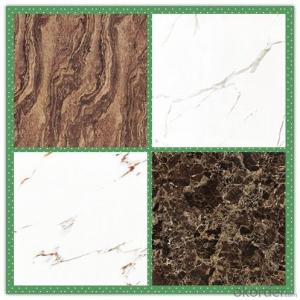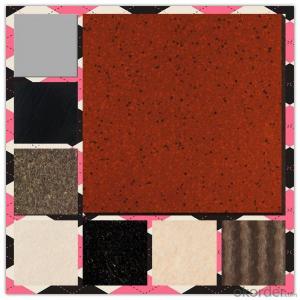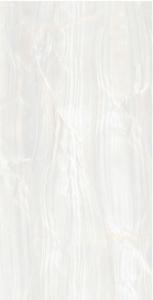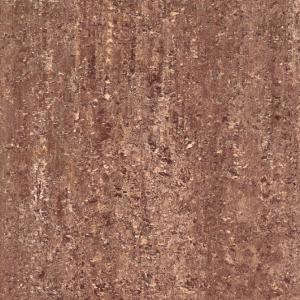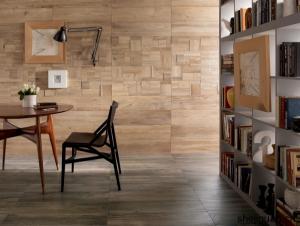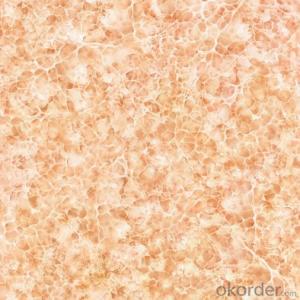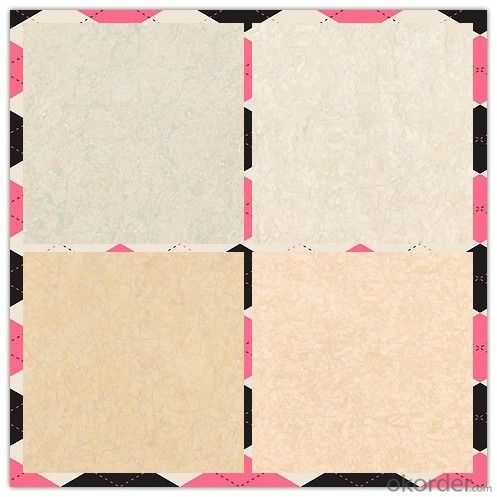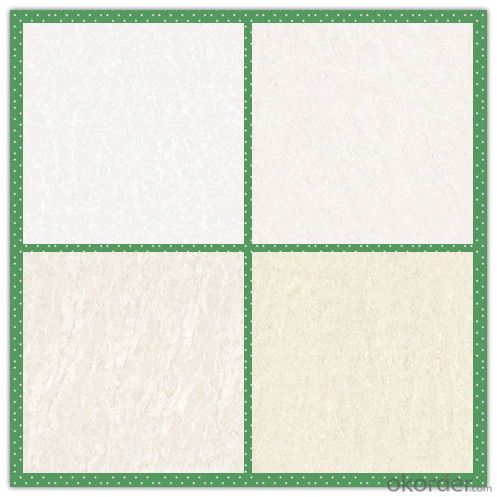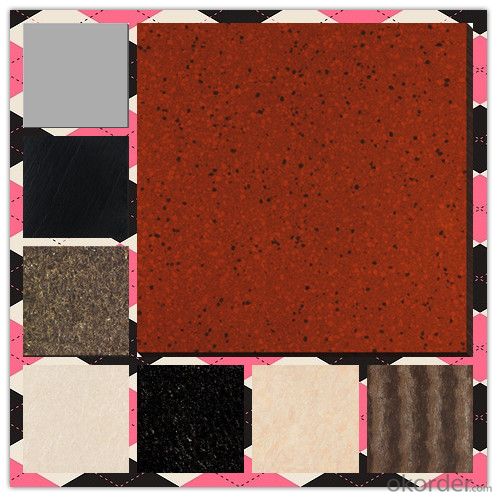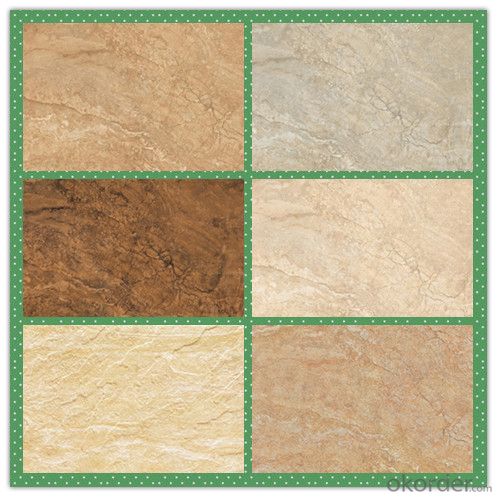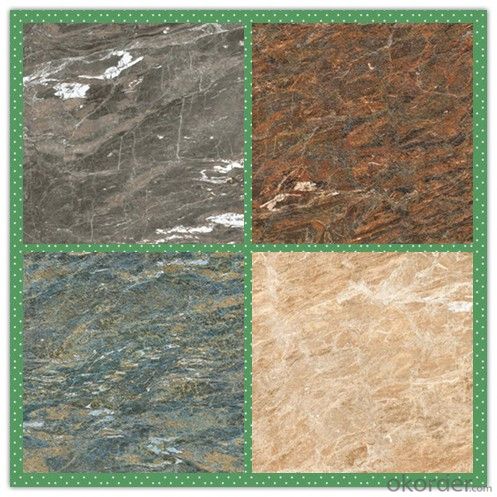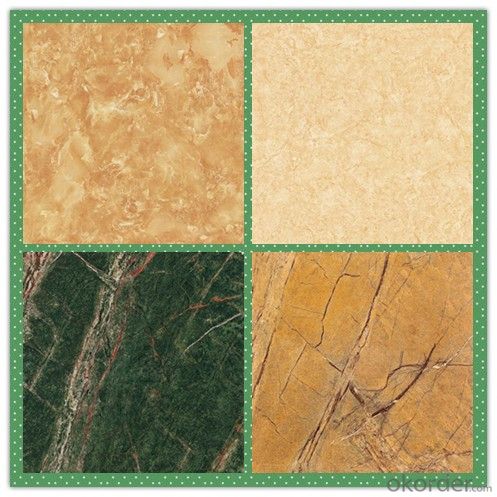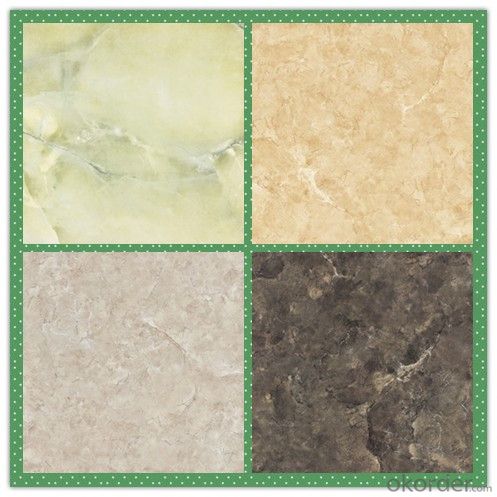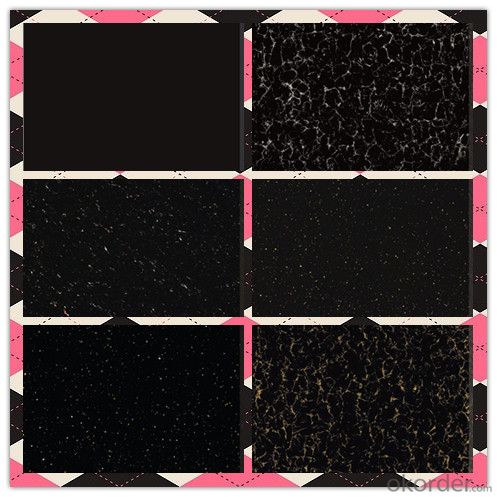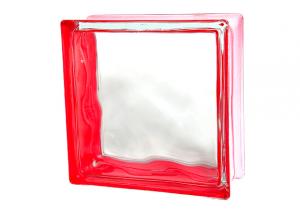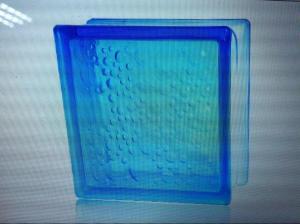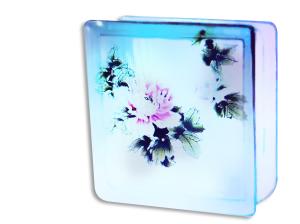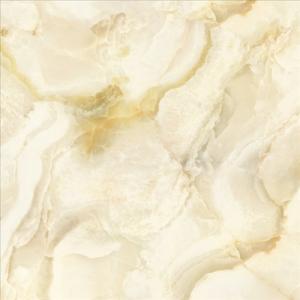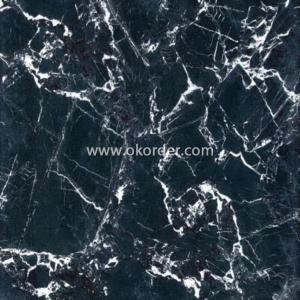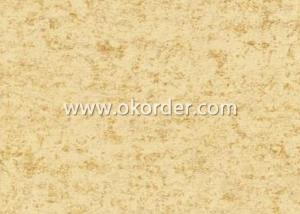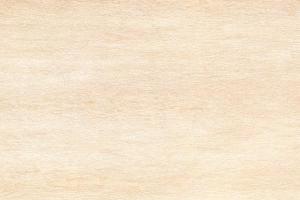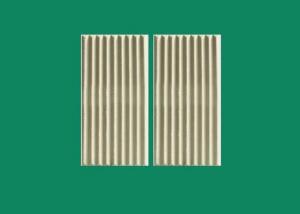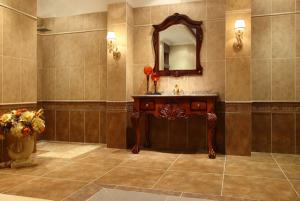Factory Directly High Quality Polished PorcelainTiles
- Loading Port:
- China main port
- Payment Terms:
- TT OR LC
- Min Order Qty:
- 1324.8
- Supply Capability:
- 1324800 m²/month
OKorder Service Pledge
OKorder Financial Service
You Might Also Like
Specifications
China polished porcelain tile
Size : 600 x 600 cm, 800 x 800 mm
Surface:Nano polished finish
Water absorption:< 0.2 %
CE&ISO
China polished porcelain tile
Product Description
Basic Information :
tile type | Porcelain tiles, porcelain polished, floor tiles |
certificate | CE, ISO9001 |
inished | Nano finish, matte finish, semi polished |
Size | 60x60 80x80 |
vailable in | many designs, size, colors |
Features:
1) Available in many designs, specifications and assorted color, unique designs and exclusive quality
2)Used for indoor & outdoor wall and floor decorations, building exterior,
3)Easy to install, anti-dust, washable, acid-proof, alkali-proof, durable
4)Material: porcelain
5)Customized sizes available according to clients’ requirements
6)Available dimensions
Material | Porcelain |
Dimension | 600x600 300x600 300x300mm |
Packing | Paper packing and wooden pallets |
Finish | polished finish with superglossy |
Usage | Floor and wall |
It’s good for hotel lobby flooring, shopping mall, big project etc
We have many different color and different design for you to choose. If you want to know more about us, go on
web please there are many new products showing on our web.
Our products are good quality with reasonable price.
We have CE & ISO9001, SASO for most of our tiles
Specification and technology information:
· NANO polished
· Water absorption:<0.1%< span="">
· Price terms:FOB Foshan
· Delivery:within 15~20 days after 30% deposit received
· Payment:T/T,L/C
· CE mark,ISO certificate
- Q:We had new ceramic tiles put in the shower. The tiles are large size (12x12) and the grout line is about the width of a pencil. After a few days we noticed very thin (hairline) cracks in the grout, especially around the shower bench and the corners of the shower. The tiles are all in place. I think the contractors mixed the grout too thin. Can I just sand those areas of grout down a bit and then put new grout on top of it over those areas?
- The contractor did not use the correct underlayment for the tiles. This means the floor underneath moves and flexes when weight is applied. Tile and grout are very rigid and don't flex. As for the grout mixture, it does not matter. Too soupy, too hard, it all end ups to be the same, just a matter of clean up for the worker. If they wont repair it, contact your attorney, you hired them to do a professional job, not a slop around side project.
- Q:I like the original quarry tiled floor from our 60‘s kitchen, but they are quite badly stained. I can‘t pretend they have any historic value, or even were particularly well laid, so on balance should I1) Replace with new tiles, perhaps up to a higher standard2) Get a specialist to restore them to something approaching their original stateWhich will cost more, and what would you do?
- Quarry tiles are made from unrefined extruded, high silica alumina clay that gets pressed into the desired form and hard burnt. They are hard and durable but have a softer composition than ceramic tiles. It is an unglazed form of tile, which comes in a natural colour selection, red, brown and beiges. A good and cheap place to start is to try using raw linseed oil. This will usually remove most of your tough stains. You want to be careful about using acids on real quarry tile because they are very porous and acids could etch your tiles permanently. If the linseed oil doesn't do the trick then a more expensive alternative would be using Lithofin Victorian Tiled Floor Restorer and a good sealer is HG Golvpolish. You should be able to get these from good tile retailers. If the tiles are laid on earth, or on a lime bed on earth, they should not be sealed as they need to breath to avoid damp being trapped. The original tile finish was a clear oil and of course this still allows the tile to breath. Try Slate Dressing from a fireplace shop, this is colourless and will give a richness to the tiles.. Hope this helps.
- Q:We had to remove some tile and break out the wall behind our shower/bath wall in order to put in a new part for new fixtures. So, now we need to repair that portion of the wall (about 3‘x2‘) and re-tile it. Do we need to use greenboard (it looks like either that or just drywall was used originally) or cement board? Also, how do we join the new portion of backing to the old portion? When tiles are removed, they damage the old backing -- so I can‘t take off an extra row of tiles and then have that backer exposed in order to tape and put mortar over. Hubby says we can cut the backer to fit the opening, and then just go ahead and tile, and that the grout will effectively seam and waterproof those joints where the new backing meets the old tiled backing. Any suggestions?
- I recently retiled my bathroom and checked the instructions for several backerboard manufacturers. They all recommended filling the seams with alkali resistant joint mesh and thinset mortar (or a similar product). I think the problem with just using grout is that there can be movement in the walls that may cause the seam eventually leak water. I would try to tape/mortar the seams.
- Q:I have some cracked squares in my kitchen.It is caused from the subfloor coming up in one section.What is the best way to remove old tiles and screw floor back down to and replace with extras that I have.I have the glue left over also to use on them.I know my husband had hard time getting them up once before.Tired of waiting for hubby to do it.Any easy ways for me to get tile up.
- Self stick tile can be gotten lose by using a hair dryer,but I see you have glue left over so that presents a little problem.The way I would remove old tile here in N.C.is to get my heat gun ,it produces a little more heat than a hair dryer. Have a stiff 1 puddy knife handy and as soon as it starts getting loose ,start sliding the knife under the edge,and across the middle.Once removed apply just a small amount of adhesive spread it thin and replace the tile.You may also need to trim the edges of the new tile just a small amount-so thay will fit.Do your fitting before you apply your finishing glue. This is called dry fitting
- Q:Do they resist stains, scratches/nicks and does it protect it from fading and making it easier to clean?The tiles will be going in my kitchen and pantry.Are unglazed tiles, ideal for high-traffic areas?
- You okorder /.... Hope this helps.
- Q:Have a tiled half wall that I dont like, and as I neither know how to remove tiles or if how to drill through a tile can anyone help?
- You just get a chisel and a hammer and pry them from the wall. If they are on concrete, then you use a really big chisel and hammer. *The sheetrock may come down with the tile.
- Q:Standard Specification for Common Tile and Flat Table
- 80x80 floor tile is 0.64 square 60X60 floor tile is 0.36 square 0.3X0.3 floor tile is 0.09 square 0.3X0.45 wall tile is 0.135 square square square ÷ brick square number = brick number such as 80 square floor laying 80X80 floor tiles 80 ÷ 0.64 = 125 tablets ? The answer was adopted by the questioner
- Q:should I clean the tiles in my basement or is there not worry about it? Thanks
- Leave them alone. The best you could do with ceiling tiles in any case would be to vacuum them; ceiling tiles don't like moisture so you can't attack them with any kind of wet cleaning agents and expect to get away with undamaged tiles. Look around and see how often you see anyone ever treating ceilings. Bacterial threat from ceilings is effectively zero: the only things that ever get there have to be airborne in which case the ceiling is the least of your worries, and you don't ever touch them anyway. Anything that lands on and sticks to the tiles will dry out very shortly, it's a ridiculously inhospitable environment for life, bacterial or otherwise.
- Q:My father wanted to replace the tiles in the master bathroom as he plans on putting the house on the market. I was skeptical whether or not he could accomplish the project and after hitting several snags I‘ve decided to get involved.The problem is that the old tile was removed and there‘s only 7/8 - 1 to work with. The new tile is 3/8 thick; leaving 1/2. His original plan was to lay down plywood, cement board, then tile, however, it‘s going to raise the floor a solid 1 which will cause several complications. Any advice on what the #$@* I‘m supposed do? I truly appreciate all of your help.
- Once you pull up the tiles and the old and get to the original subfloor you can put your backerboard directly on that. You don't need an extra layer of plywood. If you feel the subfloor is not sufficient you need to replace it too. If the subfloor is sturdy it is okay to put down a layer of thinset, then put down your backer, then screw the backer and fill the seams with thinset and the appropriate seam tape. Then lay your tiles like normal.
- Q:i have ceramic tiles that are loose hollow underneath
- Yes Rob...I would suggest you pull up a piece of tile. If the tile has thinset on it, Then there is no bond to the substrait (the floor/plywood, cementitious backerboard or dry packed mortar). If there is no thinset on the tile, Then the thinset may have set-up before the the tile was put down. Stand where the tile is coming up and roll up on to your toes, with some force! bang down with the heals of your feet. If you feel the floor move/bounce, Then the substrait is faulty. In any event the floor must be taken up. TCNA (Tile Council of North America) Suggests a 19/32 tongue and groove plywood subfloor over joists 16 on center and a underlayment plywood floor of 19/32 with an 1/8 cap between sheets. I know its a lot to take in but if you have another installer redo the floor you should get the TCNA handbook and make sure its done right. It only costs about $9.00 Look up TCNA on line. Also make sure the installer uses a super modified thinset!
1. Manufacturer Overview |
|
|---|---|
| Location | |
| Year Established | |
| Annual Output Value | |
| Main Markets | |
| Company Certifications | |
2. Manufacturer Certificates |
|
|---|---|
| a) Certification Name | |
| Range | |
| Reference | |
| Validity Period | |
3. Manufacturer Capability |
|
|---|---|
| a)Trade Capacity | |
| Nearest Port | |
| Export Percentage | |
| No.of Employees in Trade Department | |
| Language Spoken: | |
| b)Factory Information | |
| Factory Size: | |
| No. of Production Lines | |
| Contract Manufacturing | |
| Product Price Range | |
Send your message to us
Factory Directly High Quality Polished PorcelainTiles
- Loading Port:
- China main port
- Payment Terms:
- TT OR LC
- Min Order Qty:
- 1324.8
- Supply Capability:
- 1324800 m²/month
OKorder Service Pledge
OKorder Financial Service
Similar products
New products
Hot products
